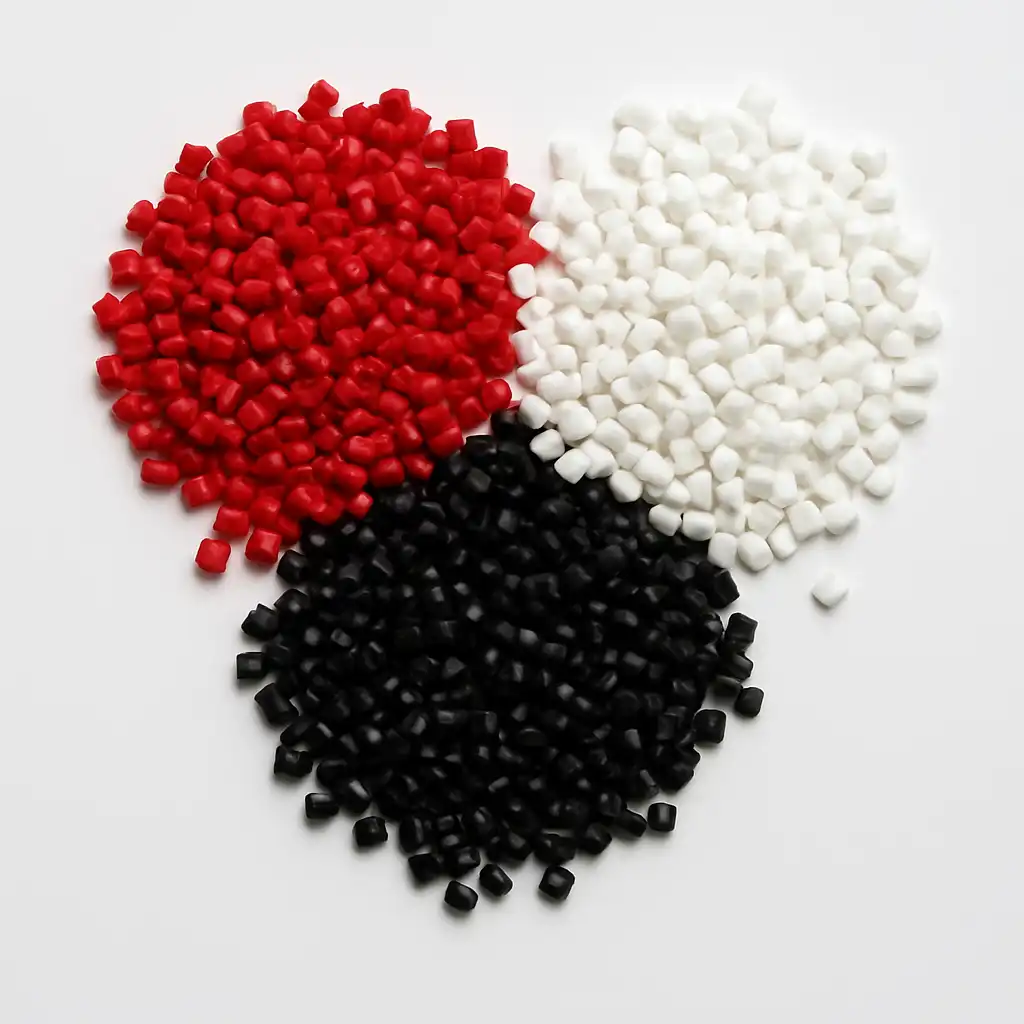The Difference Between Color, White, and Black Masterbatch — Which One Is Right for Your Production?

Choosing the right masterbatch can make a big difference in the quality and appearance of your final plastic products. Whether you need bright colors, a clean white finish, or a deep black tone, each type of masterbatch has unique properties and applications. In this article, we’ll explore the key differences between color, white, and black masterbatch and help you decide which one best fits your production needs.
What Is a Color Masterbatch?
Color masterbatch is a concentrated blend of pigments and a polymer carrier used to give plastic products their specific color. It allows manufacturers to achieve vibrant and consistent shades without affecting the mechanical properties of the plastic. The pigments used can be organic or inorganic, depending on the required brightness, transparency, and heat resistance.
At Asra Polymer, color masterbatches are designed to deliver high dispersion, strong tinting strength, and long-lasting color stability. They are widely used in packaging, consumer goods, and automotive parts where aesthetics are a key factor.
Understanding White Masterbatch
White masterbatch is the most common type used across different plastic industries. It mainly contains titanium dioxide (TiO₂) as the pigment, which provides strong opacity, high brightness, and UV resistance. These properties make it ideal for film production, bottles, containers, and injection-molded items.
A high-quality white masterbatch enhances the look and durability of products by preventing yellowing or color fading over time. Asra Polymer’s white masterbatch is formulated to offer superior coverage and consistent whiteness even at low dosage rates, saving both material and cost.
Exploring Black Masterbatch
Black masterbatch is formulated using carbon black, a pigment known for its intense color and UV protection. It not only gives plastics a deep black tone but also improves their mechanical strength, heat stability, and light resistance.
Because of these advantages, black masterbatch is often used in pipes, cables, agricultural films, and automotive components. At Asra Polymer, black masterbatches are developed to provide high jetness, excellent dispersion, and smooth surface finish — ensuring both beauty and performance in your final product.
Key Differences Between the Three Types
The main difference between color, white, and black masterbatch lies in their pigment composition and end-use purpose.
- Color masterbatch focuses on aesthetic appeal and branding flexibility.
- White masterbatch ensures brightness, coverage, and opacity.
- Black masterbatch provides protection and strength.
Depending on the type of product you manufacture, you may use one type alone or combine them to achieve specific effects — for example, adding color masterbatch to a white base for soft pastel tones.
How to Choose the Right Masterbatch for Your Application
When selecting a masterbatch, consider these factors:
- Type of polymer base (PE, PP, PET, etc.) — the carrier resin must be compatible.
- Processing temperature — ensure the pigments can withstand your production conditions.
- Desired visual result — glossy, matte, transparent, or opaque finish.
- UV and thermal requirements — outdoor products need UV-stabilized masterbatches.
- Cost efficiency — high-quality masterbatches often reduce waste and improve consistency.
At Asra Polymer, our experts help customers choose the best formulation for their exact application — balancing performance, appearance, and cost.
Why Working with Asra Polymer Makes a Difference
What sets Asra Polymer apart is our commitment to quality, consistency, and customization. We use advanced compounding technology and premium pigments to ensure every batch meets international standards. Whether you need bright colors, ultra-white, or high-jet black, our masterbatches are tailored to deliver reliable results in every production run.
Conclusion
Color, white, and black masterbatches each serve a unique purpose in the plastics industry. Choosing the right one depends on your desired product appearance, functionality, and durability.
With Asra Polymer, you don’t just get color — you get performance, reliability, and professional support that make your production smoother and your products stand out.

